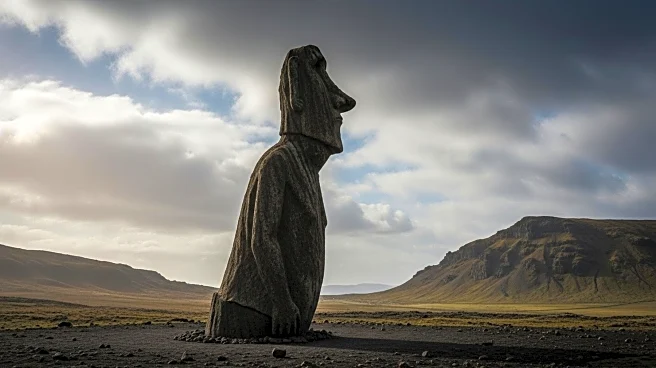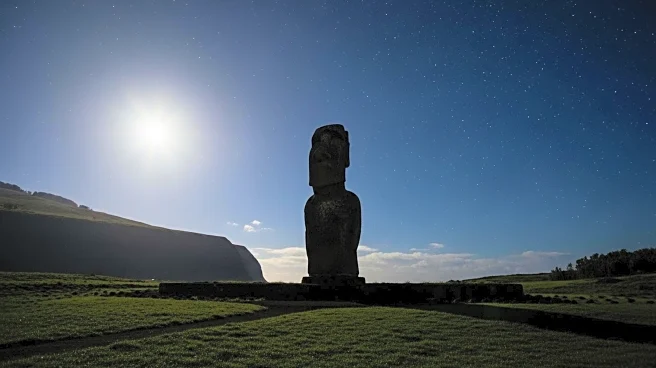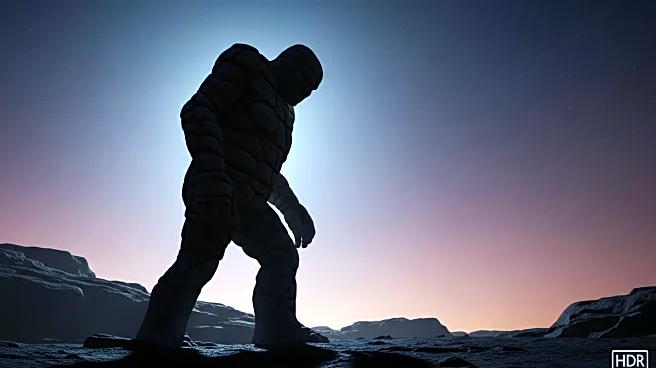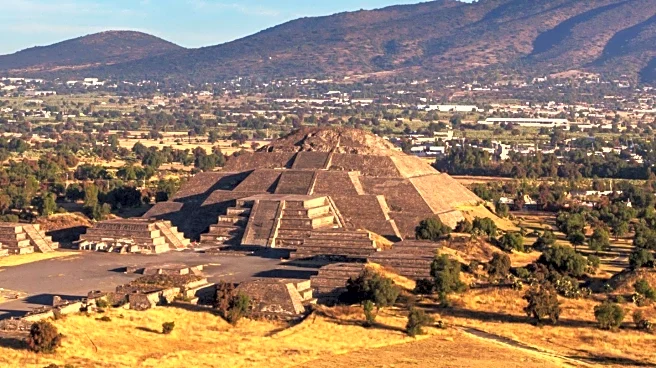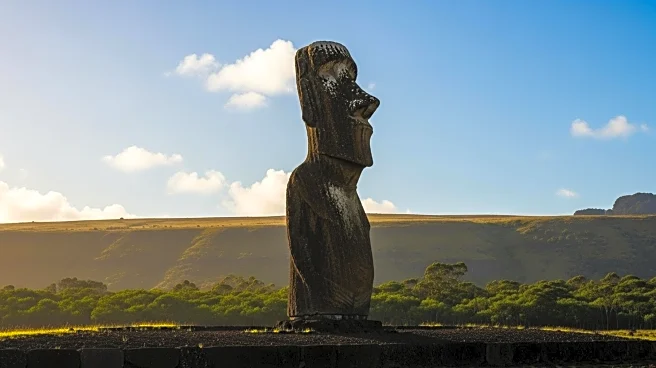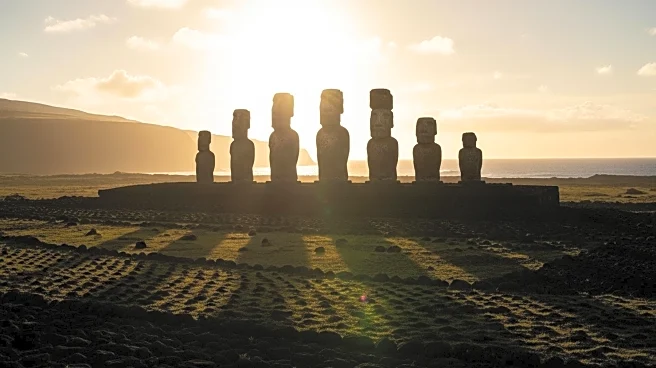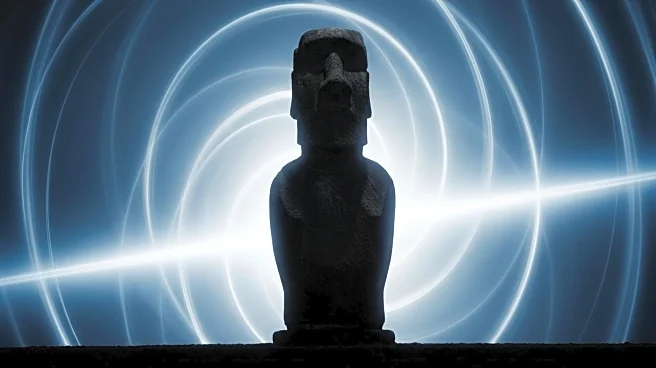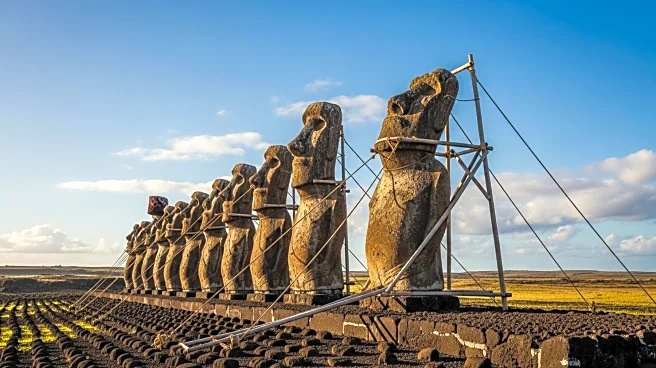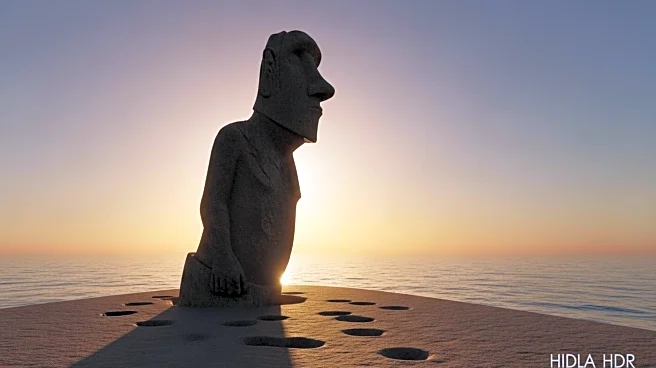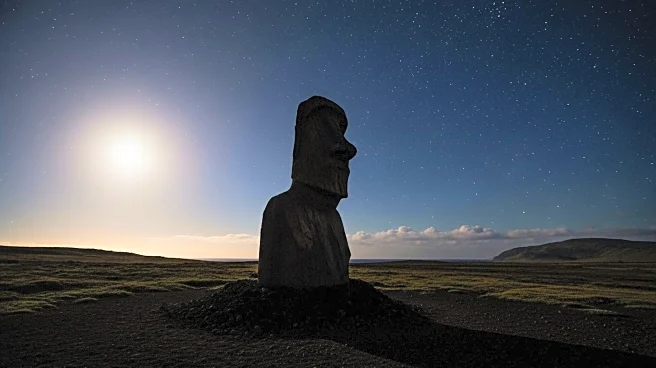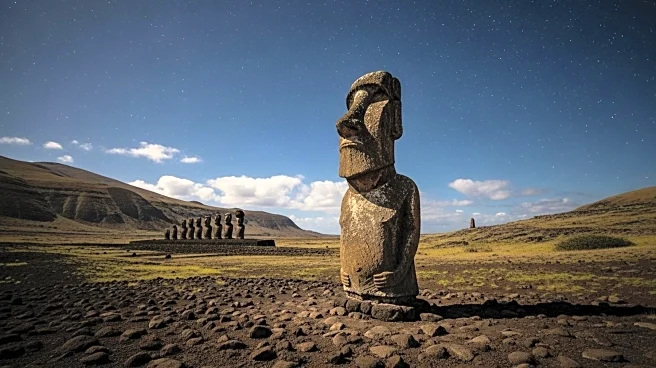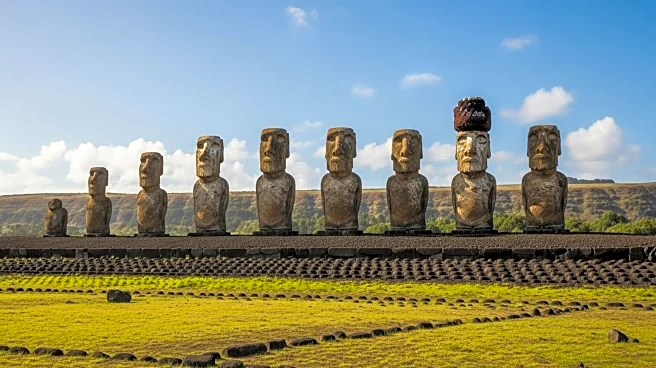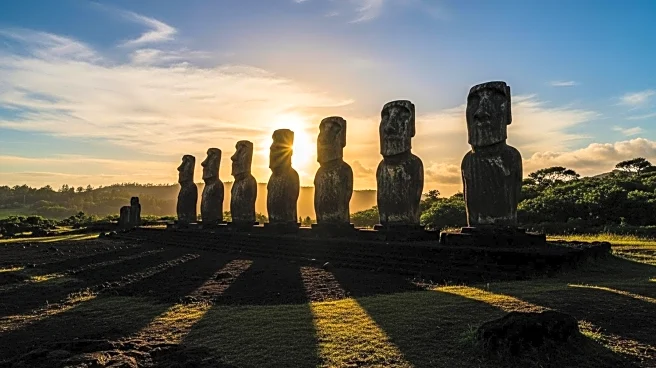What is the story about?
What's Happening?
Researchers from Binghamton University and the University of Arizona have discovered that the moai statues on Easter Island were moved using a 'walking' method. The team, led by Carl Lipo and Terry Hunt, used physics, 3D modeling, and experimentation to show that the statues were rocked in a zigzag motion using ropes, allowing them to be transported upright along specially designed roads. This method challenges previous theories that suggested the statues were dragged horizontally. The study involved creating a replica statue and successfully moving it using the proposed technique.
Why It's Important?
This discovery provides insight into the ingenuity and resourcefulness of the Rapa Nui people, who managed to transport massive stone figures using limited resources. Understanding the methods used by ancient civilizations can offer valuable lessons in engineering and problem-solving. The findings also highlight the importance of evidence-based research in archaeology, potentially influencing future studies and interpretations of historical artifacts.
Beyond the Headlines
The study emphasizes the cultural significance of the moai statues, which represented ancestors and held spiritual meaning for the Rapa Nui people. The act of making the statues 'walk' may have symbolized the journey of ancestors watching over their descendants. This connection between practical engineering and cultural beliefs showcases the harmonious relationship between science and spirituality in ancient societies.
AI Generated Content
Do you find this article useful?
